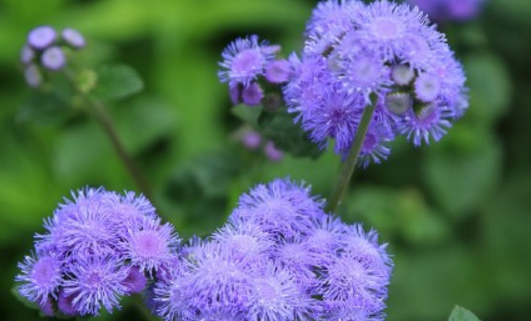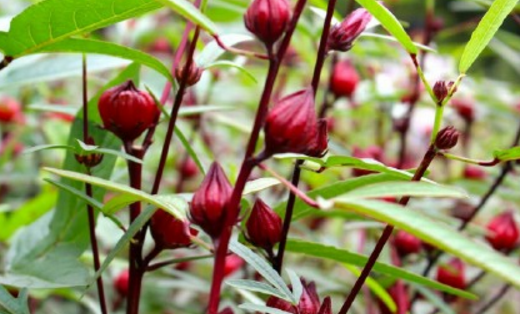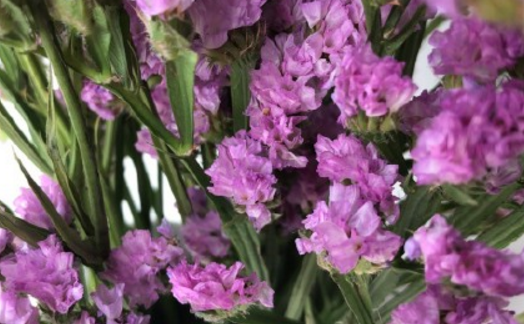What is the difference between Platycodon grandiflorum patchouli thistle and false smelly grass? How do you plant seeds? Is it poisonous?
Patchouli thistle, alias Shenghong thistle, also known as salted shrimp flowers, hairy musk, butterfly grass, etc., so what is the difference between patchouli thistle and pseudostinky grass? How do you plant seeds? Is it poisonous? It is understood that although Huoxiang thistle and pseudostink thistle belong to Compositae, Huoxiang thistle belongs to Shenghong thistle, while pseudostinky thistle belongs to Zelan, they belong to different genera of the same family.

First, what is the difference between patchouli thistle and false stinky grass?
1. The family and genus differences between Huoxiang thistle and pseudostinky grass.
Although Huoxiang thistle and pseudostinky thistle belong to Compositae, Huoxiang thistle belongs to Shenghong thistle, while pseudostinky thistle belongs to Zelan, they belong to the same family and different genera.
2. The leaves of patchouli thistle and pseudostinky grass are different.
The leaf of Huoxiang thistle is broad-ovate or ovate-shaped, the leaf shape is more round, the serrated tooth is obtuse, the edge sawtooth is not obvious, while the leaf of false smelly grass is ovate, broadly ovate or diamond-shaped, the leaf shape is sharp, the edge sawtooth is obvious. In terms of leaf odor, the leaves of false smelly grass can smell a pungent smell similar to cat urine, while the smell of patchouli thistle is lighter.
3. The involucre of Huoxiang thistle is different from that of pseudostinky grass.
This difference is more obvious, the involucral bracts of patchouli thistle are cup-shaped, while those of false smelly grass are long tube-shaped or bell-shaped.
4. The effects of patchouli thistle and pseudostinky grass are different.
Although the two kinds of plants are invasive species, Huoxiang thistle has certain ornamental value and medicinal effect. At present, it seems that false smelly grass is only harmful, and the control of false smelly grass is an important task, because it excludes other grasses wherever it goes, which seriously affects the plant diversity in this area. Moreover, false smelly grass can seriously consume soil nutrients and destroy soil fertility and tillability. In addition, false smelly grass will secrete a poisonous stench, which is not conducive to livestock foraging.
Second, how to plant seeds?
1. Preparation of soil
Different flowers need different soil for sowing, so a good selection of soil plays an important role in the growth and development of patchouli thistle. The planting soil of Huoxiang thistle needs to use pastoral soil, and then add the same amount of agricultural fertilizer, and then add a small amount of mature fertilizer to mix evenly. After this preparation of soil, the seeds will germinate easily, and the developed patchouli thistle will grow very strong.
2. Sowing seeds
Because the seeds of patchouli thistle are very small, sowing becomes relatively difficult. The time of sowing is generally determined according to the flowering time of Huoxiang thistle, so its flowering time can be adjusted by adjusting the sowing time of Huoxiang thistle. If you need them to blossom around International Labour Day, you can sow them at the end of August and early September of the previous year, so you need to put them in a warm room for the winter, and you can't get out of the warm room until late April of the following year. In general, however, patchouli thistle is sown in a warm room in February or in the open field in April.
When sowing, you need to put the prepared soil into a basin, then flatten and press it, pour it thoroughly, and then put the seeds of patchouli thistle on the soil. The seeds of patchouli thistle do not need light, so you need to put a layer of soil on the top layer of the seed, but it should not be too thick to press the seed slightly. After about a week, you can see the seeds sprouting.
3. Colonization
Planting is done when the seeds sprout and grow a few leaves. First of all, you need to choose a suitable flowerpot, generally a flowerpot with a diameter of more than ten centimeters, and then the potted soil needs to be mainly pastoral and sandy, and then the seedlings of agastle thistle are planted in the soil, compacted, and then watered and placed in a cool place for about a week before they can be transplanted to a sunny place to grow.
4. Daily management
Do not water too much water, generally let the soil moist, early growth can be appropriate more water, so that the growth of patchouli thistle is good.
Fertilization, generally in the growth period can be applied once or twice organic fertilizer, thin fertilizer can be.
Because patchouli thistle likes the sun, it can bask in the sun more.
Is it poisonous?
This plant is non-toxic, and it is also a plant that can be made into medicine. In Africa and America, it is often used to clear heat and detoxify and to reduce inflammation and stop bleeding. In China, it is usually used to treat colds and fever, eczema, traumatic bleeding and burns.
Purpose:
1. Landscape value. Because the plant itself will grow in clumps, appears to be very dense, and its color is lilac, this light and elegant color coupled with small and dense flowers, is most suitable for planting in flower beds or as ground covers. Of course, this plant is also very suitable for planting in small courtyards, roadsides, and parks as an embellishment. Short varieties can be grown and appreciated as potted plants, while tall varieties can be used to cut flowers, place bottles, or make baskets.
2. Medical use. This plant has many functions, but its utility is almost the same everywhere. In Yunnan, this plant is often used to treat acute gastroenteritis or respiratory infections, tonsillitis, acute gastroenteritis, kidney or bladder stones, and some people use its tender leaves to treat dysmenorrhea; in Beijing, it is mainly used to treat colds and fever In Guangxi, the plant is used to treat vomiting and diarrhea, otitis media, traumatic bleeding, stomachache, centipede bites, flu and other symptoms.
3. Fancy language. This plant has the meaning of "beloved".
Time: 2019-03-16 Click:
- Prev

The breeding methods and matters needing attention of Jinkui Keluo Shenhua? How do you make tea? What are the functions?
The flower language of Luoshenhua is the feeling of falling in love, so the breeding methods and precautions of Luoshenhua? How do you make tea? What are the functions? According to information, Luoshenhua likes light, and likes a relatively warm environment, generally between 25 ℃ and 30 ℃, the growth will be better. Luoshenhua is more drought-tolerant.
- Next

What is the planting method of Baihua Danke Buxue grass? Disease and its control? What is the use of it?
Buxue grass is mainly distributed in the hillsides and meadow saline soil of Northeast China, Inner Mongolia, Inner Mongolia and other places in China, so what is the planting method? Disease and its control? What is the use of it? According to the data, Buxue grass likes cool climate and strong light, and blossoms well after low temperature treatment.
Related
- Fuxing push coffee new agricultural production and marketing class: lack of small-scale processing plants
- Jujube rice field leisure farm deep ploughing Yilan for five years to create a space for organic food and play
- Nongyu Farm-A trial of organic papaya for brave women with advanced technology
- Four points for attention in the prevention and control of diseases and insect pests of edible fungi
- How to add nutrient solution to Edible Fungi
- Is there any good way to control edible fungus mites?
- Open Inoculation Technology of Edible Fungi
- Is there any clever way to use fertilizer for edible fungus in winter?
- What agents are used to kill the pathogens of edible fungi in the mushroom shed?
- Rapid drying of Edible Fungi

